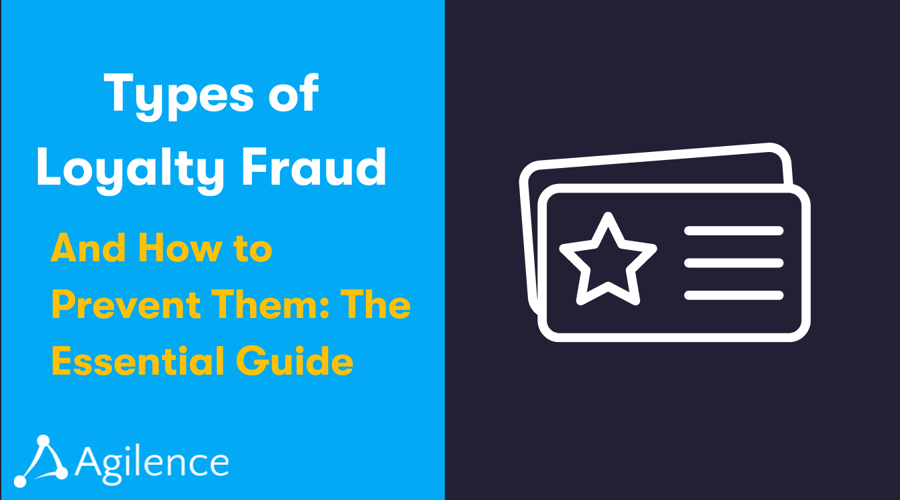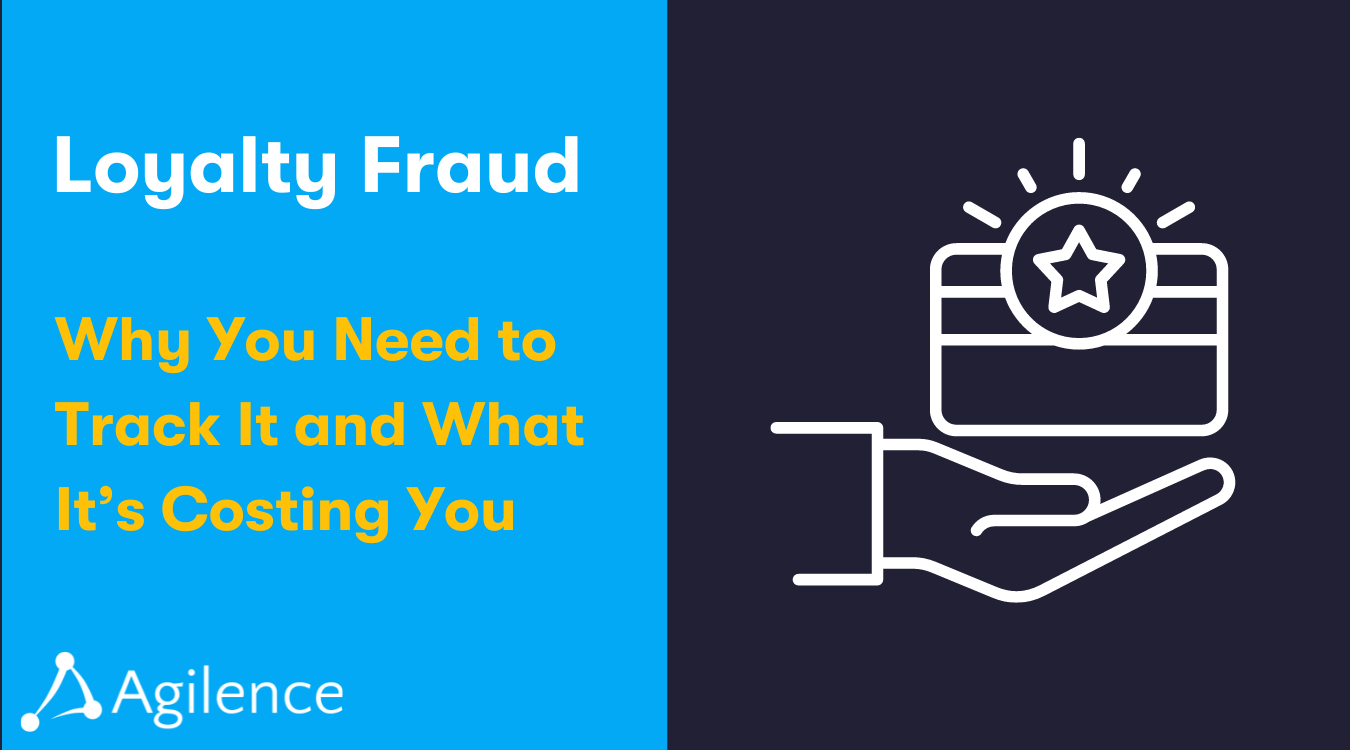Types of Loyalty Fraud and How to Prevent Them: The Essential Guide
Grocery Retail Restaurant
For retailers and restaurants, customer loyalty programs are pivotal in fostering repeat business and rewarding consumer dedication. However, in the past few years, loyalty program fraud has risen by 89%, with 72% of loyalty managers saying they’ve experienced fraud, according to the Forter Fraud Index. The rise of loyalty program fraud is casting a shadow over these initiatives, creating financial loss for businesses and eroding customer trust.
Loyalty program fraud encompasses a range of malicious activities, from external cyberattacks that target valuable rewards and personal data, to internal abuses by employees, to novel policy exploits by unscrupulous customers.
In this article we dive into the types of loyalty program fraud and abuse, examining its various forms, the factors driving its increase, and the essential strategies businesses must adopt to protect their programs and maintain customer confidence.
What is Loyalty Program Fraud and Abuse?
Loyalty program fraud is the deliberate manipulation and exploitation of customer loyalty programs, whether from external hackers and criminals or opportunistic customers, seeking to gain financial benefits through unethical or illegal means.
External threats frequently come from cybercriminals who target loyalty programs due to the valuable rewards they offer, such as cash, products, gifts, and services. By infiltrating these programs, hackers can access customers' personal data or steal accumulated loyalty points, converting them into cash or products from the impact retailer or restaurant. This type of fraud can result in substantial financial losses for businesses and erode customer trust.
Internally, some employees may engage in deceitful practices, such as claiming unredeemed points for personal gain or exploiting the system on behalf of friends and family. Customers might exploit loopholes within the reward program, such as creating multiple accounts to receive welcome bonuses or generating points through poor-quality referrals. These types of activities might be referred to as loyalty program abuse (instead of fraud), as they aren’t criminal acts but go against the policies of the loyalty program.
Loyalty program fraud and abuse encompass a broad spectrum of activities, ranging from unethical actions to outright criminal behavior. While some fraudulent acts may appear minor, such as bending program rules for extra points, others can be severe, involving sophisticated hacking operations and Organized Retail Crime (ORC) schemes to steal customer data and significant amounts of loyalty currency. As loyalty programs continue to grow, loyalty program fraud and abuse is becoming a more critical concern for retail and restaurant loss prevention and operations professionals.
Why is Loyalty Fraud On the Rise?
Loyalty fraud is becoming a growing problem for retailers and restaurants due to the combination of vast amounts of unused loyalty points and insufficient security measures. Many systems harbor a significant number of inactive accounts, each holding valuable points that are ripe for exploitation by cybercriminals. These dormant accounts often fly under the radar, making them prime targets for illicit activities.
One of the key reasons loyalty fraud is escalating is the low priority given to the security of loyalty programs within many organizations. As businesses focus on increasing sales and customer engagement through these programs, they often overlook the necessary investment in security measures to protect them. This lack of attention leaves loyalty programs as vulnerable entry points for fraudsters.
Loyalty points have monetary value, and there is an estimated $48 trillion worth of unspent points globally, presenting a tempting opportunity for fraudsters. In the US alone, $140 billion worth of rewards points sit unused, and with nearly half of all reward program members inactive, they are often unmonitored. The sheer volume of accounts involved amplifies the potential for fraud. The average household in the U.S. is part of 18 different loyalty programs, many of which are inactive and thus less frequently monitored by the account holders. This inactivity provides an opportunity for fraudsters to exploit these accounts, often using similar login credentials across multiple platforms to maximize their gains.
Loyalty program fraud is a direct contributor to shrink, causing preventable loss and damaging the bottom line of retailers and restaurants. Fraud compromises the economic viability of loyalty programs by inflating costs and skewing data analytics intended to understand genuine customer behavior. Furthermore, they create an unfair environment for legitimate customers, potentially damaging the reputation of the business and eroding trust in the brand. Loss Prevention (LP) and operations professionals need to learn to identify loyalty program fraud and abuse and safeguard their loyalty programs.
Types of Loyalty Program Fraud and Abuse
Like many sources of shrink for retailers and restaurants, loyalty program fraud and abuse encompass a wide spectrum of activities ranging from legal but possibly unethical exploitation of loyalty programs that go against the intent of the program, to gray area hacks and policy abuse that go against a program’s terms of service, to intentional criminal activity by organized fraudsters. All of them hurt your organization’s bottom line. Understanding the types of fraud and abuse can help your team identify fraud and abuse when it occurs, patch up vulnerable areas, and prevent them in the future.
Policy Abuse
Policy abuse encapsulates actions that involve exploiting a system's established rules or guidelines for illegitimate gain. This type of abuse is done by opportunistic customers. In some of these types of abuse, you may not want to open a case or take action against customers who partake in them, but nonetheless discourage such abuses or even ban customers from future loyalty program benefits. It often involves acts that may not technically be illegal but are considered unethical or against the intent of the policy. In the context of loyalty programs, policy abuse could include practices such as:
- Creating an excessive number of bogus accounts to capitalize on introductory bonuses or offers
- Exploiting loopholes in a program's terms and conditions to accumulate an unusually high volume of reward points or discounts, such as purchasing items to earn points and returning them while keeping the rewards
- Gaming referral systems by referring fictitious customers or continually canceling and rebooking services to exploit initial booking perks
- Excessive engagement with social media, like over-sharing the same posts from businesses in return for benefits
- Referring poor quality leads for rewards
- Selling points or prizes to others
- Double-dipping points by redeeming them simultaneously on multiple platforms
- Making expensive purchases to accrue points and then canceling the product
- Sharing loyalty cards among people, inflating reward points that don't correspond to individual usage
- Exploiting programs that allow service first and payment later, such as pump-and-run tactics in fuel programs for retailers or grocers with gas stations
- Using single-use coupons multiple times by making back-to-back transactions
- Simulating customer feedback or reviews to receive rewards for opinions
- Misusing employee discount programs by sharing benefits with unauthorized individuals
- Stacking multiple coupons or discounts illegitimately to get items at drastically reduced prices
- Circumventing expiry rules to unfairly extend or reset the expiration of points or rewards
Policy abuses vary depending on the exact conditions of your loyalty program – the key is to design or update your loyalty program to prevent such abuses and explicitly forbid them in the program’s terms of service.
Employee Fraud and Abuse
Employee fraud is a significant threat to loyalty programs due to the intimate knowledge and access employees have to these systems. Often overlooked, employees can exploit system vulnerabilities, bypass controls, or misuse their privileged access rights, leading to the theft of reward points, personally identifiable information, or manipulation of member accounts. This type of fraud is particularly insidious because employees, with their deep understanding of the program's workings, can execute subtle yet substantial alterations that are hard to detect. Such activities not only lead to financial losses but also pose severe risks to customer trust and company integrity, potentially resulting in identity theft and legal repercussions.
In many cases, employees capitalize on their access and authority to gain undue benefits. However, it's important to note that while insider fraud is prevalent, it involves only a minority of employees. Understanding the various tactics used can help businesses implement better safeguards to protect against these internal threats.
- Employees with authority to distribute points may credit their own accounts or the accounts of their family and friends.
- They might add points to resolve issues for non-existent customers, inflating their own rewards.
- Employees scan their own loyalty cards during customer transactions to accumulate points meant for customers.
- Unauthorized discounts are extended to friends and family, exploiting employee benefits.
- Employees manipulate points adjustments for personal gain or for acquaintances.
- Coupon misuse involves using single-use coupons multiple times or stacking them on a single transaction.
- Employees engage in returns fraud, keeping rewards after returning purchased items.
- Improper discounts are given to friends or family for high-ticket items, such as applying employee discounts to a neighbor's purchase.
- Employees use multiple tenders with a single loyalty ID to fraudulently accumulate rewards.
- Personal usage of loyalty IDs for transactions not intended for employees occurs across sectors like grocery and retail.
- Employees exploit store credit cards to apply unwarranted discounts and perks to non-loyalty card transactions.
- Commission fraud involves manipulating sales to benefit from commissions, such as voiding and rerunning orders under different accounts.
External Attacks, Account Takeovers and Data Breaches
Loyalty programs hold information in systems accessible from the Internet, providing a juicy target for cybercriminals. Unlike banking and other financial systems, loyalty programs typically have a low-level of security, despite housing personally identifiable information of customers, as well as loyalty currency with a monetary value.
When a loyalty program's database is breached, cybercriminals can gain unauthorized access to sensitive client data, such as account credentials and personal information. This unauthorized access not only allows fraudsters to manipulate accounts for personal gain—through unauthorized transactions, reward redemptions, or account alterations—but also enables them to sell these credentials on the black market or use them for more advanced crimes like identity theft. The repercussions extend beyond immediate financial losses to include a severe erosion of customer trust and lasting reputational damage for businesses.
Retailers and restaurants must implement strong security measures and educate both employees and customers on best practices to prevent such breaches and account takeovers. Here are common tactics used by hackers:
- Automated bots sign up for multiple loyalty accounts to exploit rewards.
- Phishing attacks deceive customers into revealing their login credentials.
- Credential stuffing employs stolen data to access accounts with reused passwords.
- Malware captures login credentials when victims access compromised accounts.
- Digital wallet exploits allow fraudsters to add loyalty cards and redeem points without consent.
By understanding these tactics and vulnerabilities, retailers and restaurants can better prepare to safeguard their loyalty programs, protecting both their customers and their own operational integrity.
Best Practices for Preventing Loyalty Program Abuse
Preventing loyalty program abuse is a critical priority for retail and restaurant operators, especially those in roles focused on loss prevention and asset protection. Implementing robust strategies to combat fraud and misuse not only safeguards the business's bottom line but also preserves customer trust and program integrity. Here are some best practices to consider:
Implement Strong Security Measures and Enhance Login Security
The foundation of a secure loyalty program is a solid security framework. Start by encouraging customers to use strong, unique passwords. Implement multi-factor authentication (MFA) for customer logins, issuing one-time passwords (OTPs) via email, SMS, or app. You can even consider using biometrics verification, such as facial identity, fingerprints, or voice recognition, which are increasingly common in banking apps. This adds an extra layer of protection against unauthorized access and helps secure the login stage, which is crucial in preventing account takeovers.
Additionally, employ CAPTCHAs to prevent spam bots from accessing accounts through brute force attempts.
Avoid the following common poor operational practices by that create vulnerabilities:
- Weak passwords and lack of two-factor authentication make accounts vulnerable to breaches
• Allowing the use loyalty cards with multiple IDs
• Lack of robust ID verification during sign-ups which allows the creation of fake accounts
• Implementing a simple account ID numbering system that allows for easy exploits
Verify Email Addresses
Prevent fraud attempts by limiting, lowercasing, and filtering email addresses. Implement a double opt-in feature to verify the existence of an email address before completing registration, thereby preventing multiple sign-ups using email aliases.
Educate Customers
Informing customers about potential risks and how to protect their accounts is essential. Regularly update them about phishing scams and the importance of safeguarding their login credentials. Also be sure to inform them of the terms of service of the loyalty program and inform them of the consequences, such as ineligibility for the program, if these terms are violated. A well-informed customer base is a powerful ally in preventing loyalty fraud.
Restrict Backend Access and Monitor Transactions
Reduce access to backend systems to a small number of authorized program managers to prevent internal fraud. Keeping the operating circle small reduces the chance of internal fraud, as potentially fraudulent activity becomes easier to track and trace. Limit access to loyalty program data to essential personnel only and monitor transactions for any irregularities. Establish thresholds for unusual activity to trigger alerts, allowing for swift intervention.
Conduct Regular Audits and Updates
Routine audits are crucial in ensuring that any process is adhering to security standards and operating as intended, and loyalty programs are no exception. Regularly review and update program policies to address new threats and incorporate customer feedback. Agilence Store Audit is the perfect tool for implementing your loyalty program audit. Robust, reliable, and fully configurable, Agilence Store Audit significantly reduces the complexity of audit processes, centralizes data, and improves communication and execution of compliance standards.
Leverage Advanced Analytics
Utilize data analytics such as Agilence Analytics to identify fraudulent patterns and anomalies in loyalty program activities. Tools like Agilence Analytics can analyze transaction data to pinpoint suspicious behaviors, such as rapid point accumulation or redemption. The platform's detailed reporting and customizable alerts facilitate proactive fraud management, while financial impact analysis quantifies revenue losses due to program abuse. This data-driven approach empowers retailers to develop refined strategies to enhance the security and profitability of their loyalty initiatives. Through insightful analytics, Agilence Analytics not only helps LP professionals identify specific abuse patterns but also validates promotional impact, guiding better-informed decisions for future promotions and collaborations between LP and marketing teams.
FAQ
What is loyalty abuse?
Loyalty abuse refers to the exploitation or manipulation of a loyalty program to gain unauthorized benefits or rewards. This can include practices such as creating multiple accounts to accumulate points fraudulently or using fake identities to exploit promotional offers. Loyalty abuse usually refers to actions short of outright fraud or criminal activities.
What is an example of loyalty fraud?
An example of loyalty fraud is account takeover, where a fraudster gains unauthorized access to a customer's loyalty account, often through phishing or using stolen credentials, and redeems points for personal gain.
How do retail loyalty programs work?
Retail loyalty programs are designed to reward customers for their continued patronage. Customers earn points or rewards for purchases or specific actions, which can later be redeemed for discounts, free products, or exclusive offers. These programs aim to enhance customer loyalty and encourage repeat business.
Is loyalty fraud a crime?
Yes, loyalty fraud is considered a crime as it involves deceitful activities such as unauthorized access to accounts, theft of rewards, and manipulation of program rules for personal gain. It can result in legal action and penalties for those involved.
What are the risks of implementing a loyalty program?
The risks of implementing a loyalty program include fraud and abuse, increased operational costs, and the possibility of alienating customers if the program is not well-designed. Businesses must invest in robust security measures and continuously monitor program activities to mitigate these risks.
Why do loyalty programs fail?
Loyalty programs may fail due to poor design, lack of clear objectives, insufficient customer engagement, and failure to evolve with changing consumer preferences. Additionally, inadequate security measures can lead to excessive fraud, undermining the program's effectiveness and damaging customer trust.
Related Articles

Loyalty Program Fraud: Why You Need to Track It and What It’s Costing You
Customer loyalty programs are nothing new for retailers and restaurants; they’re a time-tested strategy to engage customers a...
Balancing Loyalty and Loss Prevention: How to Battle Rewards Program Fraud
Retailers are focused on developing long-term customer relationships that drive profits. While product, price, and promotion ...
How to Prevent Gift Card Fraud This Holiday Season
Gift cards have become a staple of holiday gifting, offering recipients the freedom to select their favorite products or expe...Subscribe to our blog
Receive free educational resources like exclusive reports, webinars, and industry thought leadership articles straight to your inbox.

